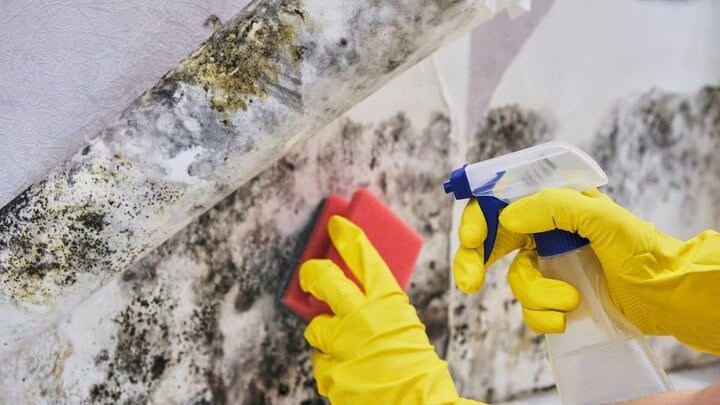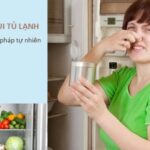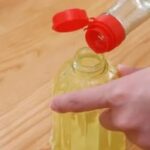The appearance of peeling and black mold on walls is a common issue that not only affects the aesthetics of your home but also poses potential health risks. To address this problem, consider the following tips and tricks.
Tips to Deal with Peeling and Black Mold on Walls
Moist and poorly ventilated areas, such as bathrooms, kitchens, or rooms with inadequate airflow, provide the perfect environment for mold growth. Inhaling mold spores can lead to various health issues, including allergies, asthma, bronchitis, skin irritation, and more. For the elderly and young children with weaker immune systems, prolonged exposure to mold can be particularly harmful. To tackle this problem, try the following simple and effective three-step process:

Dealing with Peeling and Black Mold on Walls
Step 1: Clean and Remove Mold
– Water and White Vinegar Solution: White vinegar’s mild acidity can effectively kill mold naturally. Dilute vinegar with water in a 1:1 ratio, soak a cloth in the solution, and wipe down the affected wall surfaces. For better results, you can also spray vinegar directly onto the moldy areas, let it sit for 10-15 minutes, and then wipe it off with a dry cloth.
– Baking Soda and Water Solution: Baking soda, with its alkaline properties, can eliminate mold without damaging the wall. Mix baking soda with water and use a soft brush to scrub the moldy areas. Let it sit for a while to allow the solution to penetrate the mold, and then wipe it clean.
– Soap and Water Solution: This is another simple and easy method to remove mild mold. Dilute soap with water and use a stiff brush to scrub the affected areas.
– Chlorine-based Solutions: In cases of severe peeling and black mold, you can use chlorine-based solutions like bleach to clean the walls. However, exercise caution when using this method as chlorine can be irritating to the skin and respiratory system.
Step 2: Address Peeling Paint or Plaster
If your walls are peeling, start by removing all the old, flaking paint before attempting any repairs. Use a paint scraper or wire brush to scrape away the loose paint, and then smooth the surface with sandpaper.
Next, inspect the walls for any signs of water infiltration. If you notice water stains or evidence of moisture, identify and address the source of the leak. This could be a roof leak or an issue with the plumbing system.
Step 3: Repaint the Walls

Repainting Walls to Prevent Peeling and Black Mold
Before applying a new coat of paint, consider using a primer or sealant to protect your walls from moisture infiltration. This crucial step will help prevent future mold and peeling issues. Opt for primers with anti-mold properties to safeguard your walls even in humid conditions. Additionally, avoid using low-quality paint, as it tends to peel easily and may not provide adequate protection against moisture.
Prevention Methods to Avoid Peeling and Black Mold
To prevent peeling and black mold from recurring, consider implementing the following measures:
– Maintain Good Ventilation: Ensure your home is well-ventilated, especially in areas like bathrooms and kitchens. Install exhaust fans or open windows to reduce humidity levels.
– Address Leaks Promptly: If you notice any water infiltration on your walls, take immediate action to fix the source of the leak. This will prevent further damage to your walls and deter mold growth.
– Use a Dehumidifier: If you live in a humid climate, consider investing in a dehumidifier to help control moisture levels in your home, creating an environment less conducive to mold growth.
– Maintain Regular Cleaning and Inspections: Develop a routine cleaning schedule and conduct periodic inspections to identify and address any signs of peeling or mold promptly.
The Ultimate Guide to Rusted Cutlery: Reviving Shine with a Common Beverage.
Introducing the ultimate guide to restoring your rusty knives to their former glory. Say goodbye to that pungent, off-putting smell and hello to a fresh, clean edge. With our expert tips and tricks, you’ll be able to bring new life to your old knives and keep them in pristine condition. Learn the secrets to removing rust and maintaining the sharpness and cleanliness of your blades. It’s time to give your knives the TLC they deserve!






































